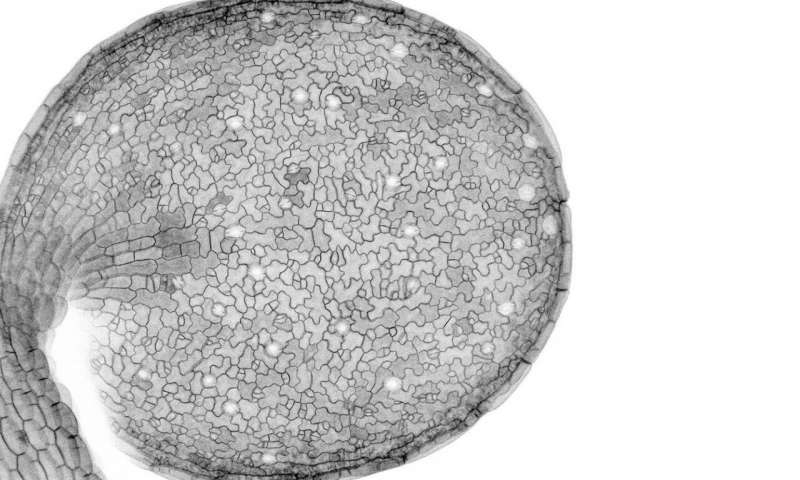HOME
'Cellular compass' guides stem cell division in plants

The stem cells tasked with creating and maintaining biological tissues have a difficult job. They have to precisely divide to form new specialized cells, which are destined to different fates even though they contain identical DNA. An obvious question then is: How do the cells divide in all the right ways to produce a healthy tissue? This was the grand motivating question for Andrew Muroyama, a postdoctoral scholar in the lab of Stanford University biologist Dominique Bergmann, as he monitored days of leaf development in the flowering plant Arabidopsis thaliana. There, amongst a thousand cells under his microscope, he noticed that the nucleus—the DNA-containing control center in the cell—moved in unexpected and strangely purposeful ways as stem cells divided.
Previous research from the Bergmann lab identified a set of proteins that shuffle to one side of the stem cell before division. These proteins seemed to regulate how the stem cell divided, but the actual control mechanisms were unknown. These moving nuclei turned out to be a key to this mystery.
In a paper published Sept. 17 in Current Biology, the researchers report that these asymmetrically distributed proteins act like a compass within the cell to instruct the nucleus where to go. The nuclear position, in turn, controls the patterns of stem cell divisions, which ultimately create tiny pores, called stomata, throughout the leaf surface. Because stomata allow leaves to balance their water and carbon dioxide levels, nuclear alignment via these miniature protein compasses within individual stem cells have the potential to affect leaf function.
"I think our research highlights that the ability to watch the behaviors of cellular machines within living organisms can reveal unexpectedly elegant ways that individual cells cooperate to build tissues," said Muroyama, who is lead author of the paper. "You might think that something as fundamental as cell division would be completely solved by now but there is still so much to learn."
News Source